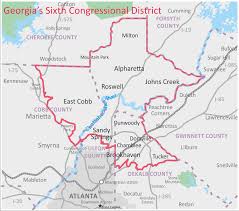
The special election between Jon Ossoff (D) and Karen Handel (R) for the suburban Atlanta (GA-06) congressional seat vacated by Tom Price is finally done. The potential referendum against the Trump regime may have fallen short, but is there something to be learned?
This race has gone down in history as the most expensive race ever for a House seat. Over $55 million being spent to secure a job that pays $174,000 a year. Reviewing my Facebook feed, most of my friends find this absurd. But my question is, what did the investment of the money demonstrate about our system of elections? Honestly, probably not much.
According to the New York Times, only 14% of Ossoff donations came from Georgia. The bulk of his money came from states like New York and California. Handel also received a significant part of her support from out of state, however, 56% of her contributors were from Georgia. The campaigns themselves raised a total of about $28 million. Again, with Ossoff being the clear leader raising a total of $23.6 million to Handel’s $4.5 million.
Both candidates received support from both party committees and “super PACs”. These groups in total spent over $25 million trying to secure this seat for “their” candidate. Here, Handel received significantly more support receiving about $18.2 million from the Congressional Leadership Fund, National Republican Congressional Committee, and other groups. Ossoff trailed here with only $7.6 million from the Democratic Congressional Committee and other groups.
It was a close race by all accounts. It has been predicted to be a nail biter and a barometer of Trump’s presidency or the Democratic Party’s ability to win in what was considered a vulnerable red district. I would argue it was less about President Trump than simple old fashion politics and party affiliation.
Ossoff’s camp was courting voters considered wealthy and highly educated. He needed to carry a slightly higher percentage of voters than he received in April. A swing of a few points in his favor would make all the difference toward victory.
He presented a straight forward, fiscally conservative message that resonated with many in the community. Progressives and other moderates rallied around his youth and polished image. He had money and support from Hollywood and was branded as the “future”. This was after all, the approach that helped launch President Obama to the highest office in the land. It served Ossoff well in a race that would have normally received little attention.
What remained true at the end of the day is that his numbers didn’t change much from April despite the large amounts of cash pumped into the race. Ossoff is reported to have won just over 48% of the vote, close to the number of votes he received in April.
Handel on the other hand won only 19.8% of the total in April. As she held the highest vote count of any other Republican in the eleven-person field, she qualified to run against Ossoff. However, the divisive elements within the Republican Party a few months earlier came together on election day. This is a common trend after a primary when a two-person field emerges. Consequently, she ended up winning just over 51% of the vote.
Some may say that the rain on election day hurt Ossoff. Yet, the 140,308 early votes cast was close to three times the 56,830 in the April. Approximately 40,000 new voters who did not participate in the April race did cast their votes early this time. As these voters were younger and more diverse, logic dictates that they likely voted for Ossoff.
Ossoff’s numbers demonstrate that the district, while it may be changing, still voted as it had historically since Newt Gingrich won it in 1978. The district will now have an incumbent Republican congresswoman up for reelection in 2018. Absent any significant development, she will likely prevail over any challenge no matter how much is spent trying to defeat her.
#Politics #PoliticalAnalysis #GA-06 #ZamaryLaw
